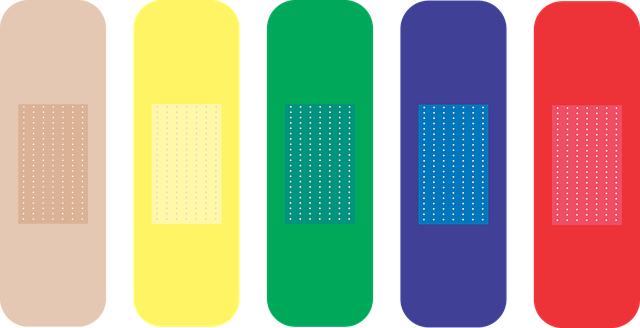Chronic pain, a global burden, prompts the exploration of alternative solutions beyond traditional medication. Regenerative pain management emerges as a game-changer, utilizing non-invasive treatments like regenerative medicine to target root causes and stimulate tissue regeneration. Pain relief therapies, including acupuncture, chiropractic care, and natural pain management techniques, offer holistic approaches that enhance the body's inherent healing abilities. Advanced pain management strategies, such as platelet-rich plasma (PRP) and mesenchymal stem cell (MSC) therapy, provide effective, sustainable solutions with minimal side effects, promising improved quality of life for chronic pain sufferers.
Chronic pain is a prevalent and often debilitating condition affecting millions worldwide. In this comprehensive guide, we explore innovative approaches to managing chronic pain without invasive procedures. From understanding the root causes to discovering the potential of regenerative pain management and advanced non-invasive therapies, these solutions offer hope for a pain-free future.
Discover natural pain relief options, regenerative recovery strategies, and how integrating medicine can facilitate an effective recovery plan, transforming lives and empowering individuals to take control.
- Understanding Chronic Pain and Its Impact
- The Rise of Regenerative Pain Management
- Exploring Natural Pain Relief Options
- Advanced Non-Invasive Therapies for Chronic Pain
- Integrating Regenerative Medicine into Your Recovery Plan
Understanding Chronic Pain and Its Impact

Chronic pain is a complex and persistent condition that affects millions worldwide, significantly impacting an individual’s quality of life. It is characterized by prolonged pain signals sent to the brain, often stemming from various sources like injuries, conditions, or neurological disorders. This ongoing discomfort can lead to physical limitations, emotional distress, and decreased overall well-being. Many individuals struggle with chronic pain for extended periods, sometimes years, without effective relief.
The traditional approach to managing chronic pain often involves medications, including opioids, which may provide temporary relief but come with potential side effects and risks of dependency. This has spurred the exploration of alternative solutions, particularly regenerative pain management and natural pain relief methods. Non-invasive pain treatments, such as regenerative medicine, offer a promising avenue for recovery through tissue regeneration and advanced pain management techniques, aiming to address the root causes rather than merely masking symptoms.
The Rise of Regenerative Pain Management

The field of medicine is constantly evolving, and in recent years, there has been a significant rise in interest for regenerative pain management as an alternative to traditional treatments. This innovative approach leverages pain relief therapies that harness the body’s inherent healing abilities, focusing on recovery through regenerative medicine. By promoting tissue regeneration, these advanced pain management techniques offer promising non-invasive pain treatments for those suffering from chronic pain conditions.
Chronic pain management has long been a complex and challenging area of healthcare. However, regenerative recovery solutions are providing new hope to patients. These natural pain relief methods not only target the symptoms but also address the underlying causes of pain. With their focus on promoting healing and restoration, these cutting-edge therapies have the potential to revolutionize the way we approach chronic pain, offering a more holistic and long-lasting solution for improved quality of life.
Exploring Natural Pain Relief Options

In today’s world, where advanced medical science offers a plethora of options, many individuals are exploring natural pain relief alternatives as part of their chronic pain management journey. Regenerative pain management has emerged as a game-changer in addressing this complex issue. This approach leverages the body’s inherent ability to heal and regenerate itself by employing cutting-edge techniques such as regenerative medicine and advanced pain management therapies. By stimulating tissue regeneration, these natural pain relief options offer promising results for those seeking recovery from chronic pain conditions.
Pain relief therapies that tap into the body’s natural healing processes have gained significant traction. These non-invasive treatments focus on targeting specific areas of discomfort without invasive procedures. From acupuncture and chiropractic care to massage therapy and physical rehabilitation, these holistic approaches aim to restore balance and promote overall well-being. As a result, individuals can experience reduced pain levels, improved mobility, and enhanced quality of life, all while embracing the benefits of regenerative recovery solutions and natural pain management techniques.
Advanced Non-Invasive Therapies for Chronic Pain

Advanced Non-Invasive Therapies for Chronic Pain
The field of regenerative medicine is revolutionizing chronic pain management with its innovative, non-invasive treatments. These cutting-edge therapies offer a promising alternative to traditional pain relief methods, focusing on healing and tissue regeneration rather than just masking symptoms. Techniques like platelet-rich plasma (PRP) therapy and stem cell treatments have emerged as powerful tools in the fight against chronic pain. PRP harnesses the body’s natural healing mechanisms by injecting concentrated platelets rich in growth factors, stimulating tissue repair and reducing inflammation. Stem cell therapies, on the other hand, offer a renewable source of cells that can differentiate into various types, promoting regenerative recovery solutions for damaged tissues.
These advanced pain management strategies are particularly beneficial for individuals seeking natural pain relief without the side effects associated with long-term use of pharmaceuticals. By targeting the root causes of chronic pain and enhancing the body’s inherent healing abilities, these non-invasive treatments provide a holistic approach to recovery. As research continues to evolve in regenerative medicine, more effective and sustainable options are becoming available for those navigating the challenges of chronic pain conditions.
Integrating Regenerative Medicine into Your Recovery Plan

Integrating regenerative medicine into your chronic pain management plan offers a promising path toward lasting relief and accelerated recovery. Unlike traditional treatments that often focus on symptom suppression, regenerative therapies aim to address the root cause of pain by stimulating the body’s inherent healing mechanisms. Techniques such as platelet-rich plasma (PRP) and mesenchymal stem cell (MSC) therapy promote tissue regeneration, reduce inflammation, and foster a more robust recovery.
These non-invasive pain treatments have gained prominence in the advanced pain management field due to their natural pain relief capabilities and minimal side effects. By harnessing the body’s own healing power, regenerative medicine provides an innovative solution for those seeking alternative approaches beyond conventional drugs or surgeries. Whether you’re navigating through a bustling daily routine or dealing with the subtle whispers of chronic pain, exploring regenerative recovery solutions could be a game-changer in your quest for lasting comfort and improved quality of life.
Chronic pain management has evolved with the rise of regenerative pain management and advanced non-invasive treatments. By exploring natural pain relief options and integrating regenerative medicine into recovery plans, individuals can experience significant improvements in their quality of life. These innovative approaches, including regenerative pain management techniques and tissue regeneration strategies, offer promising solutions for those seeking long-term relief from chronic pain. Embracing these modern methods paves the way for a more holistic and effective approach to managing and overcoming persistent pain.
